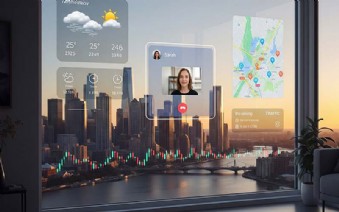-

Company
Product
ALUMINIUM MACHINES
PORTABLE MITER SAWS FOR ALUMINUM
PORTABLE COPY ROUTER MACHINES FOR ALUMINIUM
PORTABLE END MILLING MACHINES FOR ALUMINIUM
AUTOMATIC MITER SAWS FOR ALUMINIUM
COPY ROUTER MACHINES FOR ALUMINIUM
END MILLING MACHINES FOR ALUMINIUM
ALUMINUM CORNER CRIMPING MACHINE
DOUBLE MITRE SAWS FOR ALUMINIUM
AUTOMATIC SAWS FOR ALUMINIUM
BAR PROCESSING CENTERS
MACHINING CENTERS FOR ALUMINIUM COMPOSITE PANELS
NOTCHING SAWS
WEDGE CUTTING SAWS AND NOTCH CUTTING SAWS
MITER SAWS FOR ALUMINIUM
PVC PLASTIC MACHINES
PORTABLE MITER SAWS FOR PLASTIC
PORTABLE COPY ROUTER MACHINES FOR PLASTIC
PORTABLE END MILLING MACHINES FOR PLASTIC
MITER SAWS FOR PLASTIC
COPY ROUTERS FOR PLASTIC
END MILLING MACHINES FOR PLASTIC
WELDING MACHINES FOR PLASTIC
CORNER CLEANING MACHINES FOR PLASTIC PROFILES
DOUBLE MITRE SAWS FOR PLASTIC
BAR PROCESSING CENTERS
GLAZING BEAD SAWS
AUTOMATIC MITRE SAWS FOR PLASTIC
METAL MACHINES
MANUAL METAL SHEET BENDING MACHINE
MANUAL BENDING MACHINES
HYDRAULIC BENDING MACHINES
NON MANDREL BENDERS
PLATE BENDING MACHINES
BORDERING AND TRIMMING MACHINES
HORIZONTAL PRESSES
BELT GRINDING MACHINES
PIPE NOTCHING MACHINES
PIPE POLISHING MACHINES
LASER CUTTING MACHINES
PRESS BRAKES
VERTICAL TURNING CENTERS
MACHINING CENTERS
WOOD MACHINES
GLASS MACHINES
ROBOTICS SPECIAL MACHINERY
Service
Blog
Contact
Blog
SMART WINDOWS

Smart Windows – Intelligent Solutions for the Future of Living
Introduction
Digitalization has revolutionized nearly every aspect of modern life, and window technology is no exception. Beyond traditional materials such as wood, aluminium or uPVC, the focus is now on smart control systems that bring comfort, efficiency and safety into one product. Smart windows combine advanced glazing technologies, automated control and integration with smart-home systems, making them a key element in the architecture of tomorrow.
What are smart windows?
Smart windows are innovative window systems equipped with sensors, motors and digital control units. They can react automatically to environmental conditions or be managed manually via smartphone apps, remote controls or voice assistants.
Key functions include:
-
automatic opening and closing depending on air quality or weather,
-
intelligent shading through electrochromic or photochromic glazing,
-
integration into smart-home systems for heating, cooling and security,
-
remote operation via internet or voice control,
-
energy optimisation by regulating light and heat flow.
Advantages of smart windows
Energy efficiency
By managing solar heat gain and ventilation automatically, they significantly reduce heating and cooling costs.
Comfort
They darken automatically in strong sunlight or open when indoor air quality declines.
Safety
They can be linked to alarm systems, detect attempted break-ins or close automatically during rain or storms.
Modern design
Electrochromic glass allows instant switching from transparent to opaque, replacing blinds or curtains.
Sustainability
By optimising energy use, they actively contribute to reducing CO₂ emissions.
Disadvantages
-
Higher purchase price compared to conventional windows.
-
Dependence on electricity and digital systems.
-
Possible compatibility issues in retrofitting with older smart-home systems.
-
Professional installation required.
Technologies
-
Electrochromic glazing: electrically switches from clear to tinted.
-
Photochromic glazing: automatically adapts to sunlight exposure.
-
Thermochromic glazing: reacts to temperature changes to reduce heat input.
-
Motorised control: automated opening and closing via sensors or apps.
-
Sensor integration: monitors air quality, CO₂ levels and weather conditions.
Applications
-
Residential homes for comfort, security and energy savings.
-
Office buildings where light and climate regulation improves productivity.
-
Hotels with smart façades offering privacy and comfort.
-
Public buildings such as schools or hospitals benefiting from automated ventilation and shading.
-
Luxury properties using smart windows as a design statement.
Future trends
-
Photovoltaic integration: windows that generate electricity.
-
AI-driven automation for even more efficient control.
-
Health-focused technology: windows monitoring air quality and adjusting ventilation.
-
Smart city networks: windows integrated into larger energy systems.
-
Eco-friendly frames combining smart tech with recycled materials.
Conclusion
Smart windows are not just an innovation but a crucial element of future-oriented building design. They combine energy efficiency, security and modern comfort while adding long-term value to buildings.
Although their costs are higher than standard solutions, the advantages in sustainability, convenience and safety make them an investment in the future.
- smart windows
- intelligent windows
- buy smart windows
- smart window prices
- electrochromic windows
- photochromic windows
- thermochromic windows
- smart window control
- advantages smart windows
- disadvantages smart windows
- smart window manufacturers
- smart window technology
- smart window installation
- smart windows architecture
- energy efficient smart windows
- modern intelligent windows
 GERMANY
GERMANY ENGLISH
ENGLISH FRANCE
FRANCE SPAIN
SPAIN PORTUGAL
PORTUGAL








